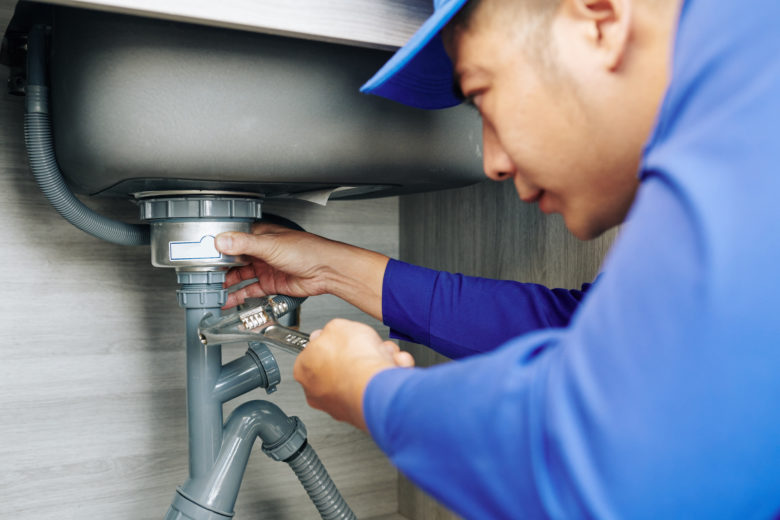According to the Department of Energy, most American homes spend around $2,060 annually on energy bills. Knowing how much of your budget utilities can consume, it isn’t surprising that you want to know how you can lower your hot water bill.
Whether you want to learn some no-cost habit changes, make some low-cost improvements or purchases, or invest in equipment that can make a difference to your home’s efficiency, there’s something in the list below that you can do.
Repair Leaky Faucets
When water is leaking at a rate of one drop per second, it can cost you up to $1 per month. While this may not seem like much, when you have different faucets leaking at a rate of 60 drops per minute, you will have wasted 8.64 gallons in just a single day. This translates into 259 gallons of lost water every month and over 3,100 gallons every year. That’s a lot of water going to waste on your dime.
Additionally, if the water leak is coming from your hot water heater, then this can be dangerous to your home. It can damage your floors and walls, and it can be a sign of an even larger problem in your unit.
In an extreme case, leakage can cause complete water heater failure and flood your home. This can lead to damaged personal property and high repair bills. There are trustworthy companies that can provide water heater repair in Carpinteria, but it’s a better idea to prevent the problem altogether before a complete overhaul of your water heating system becomes necessary.
Additionally, water heater leaks can cause health issues. Wet areas in your home lead to mold and mildew, which can aggravate asthma and cause serious allergic reactions for some people. Quickly repairing leaks in whatever appliance or pipe they appear in will save you in the long run.
Lower the Temperature of Your Water Heater
Although most manufacturers set water heaters at 140°F, 120°F is generally hot enough for typical household chores. Estimates say that for every 10°F you lower your water, you can save between three and five percent of your water heating expenses.
Moreover, apart from decreasing your water heating energy bills, lowering your thermostat will slow down mineral buildup, reduce scalding, and decrease corrosion in your unit.
Insulate Your Water Pipes
Consider insulating the first few feet of hot water pipes connected to your water heater. This can reduce the heat loss as water travels through the pipes.
Insulating your water heater storage tank could also reduce heat loss and also prevent your unit from automatically turning on frequently. New units will likely be insulated already, so you don’t have to worry; however, older units might need some extra help. A good way to tell whether your unit needs insulation is by touching it; if it’s warm to the touch, insulation will help.
You can find pre-cut jackets or blankets for your pipes and tank for a very low cost. Just be aware that if you have an electric water heater tank, you should be careful not to cover the thermostat. On the other hand, if you have an oil or natural gas water heater, remember not to cover the top, burner compartment, and thermostat.
Install Low-Flow Devices
Federal regulations stipulate that all new showerheads and faucets should have a low-flow rate. However, fixtures manufactured before 1992 use up to twice as much water as newer ones. By investing in low-flow devices, you can save 25% to 60% of the water that would have otherwise gone to waste.
Switch to a Tankless Water Heater
There is a reason why tankless water heaters have become popular over the last one decade despite their higher upfront costs. They heat water instantly, don’t require a storage tank to store unused heat, and they help lower monthly energy bills.
Results from a recent study show that a tankless water heater is expected to help you save an average $108 annually in energy costs over traditional storage water heaters. Although that may not be a large amount, considering the other benefits that tankless water heaters provide—including saving space, lasting longer, and being environmentally friendly—many people are embracing the switch to tankless.
Use Less Hot Water
Of course, changing your habits is perhaps the easiest way to lower your hot water bills. Instead of taking frequent baths, you can stick to showering instead. A 10-minute shower with a standard shower head uses an estimated 25 gallons of water, while a full bath can use up to 70 gallons.
Another easy change to make is using cold water for more laundry loads. You can also limit hot water waste by only running loads of dishes or laundry when they’re full instead of doing smaller batches intermittently.
Home water and heating costs can get expensive. However, you don’t have to throw your money down the drain by paying high water bills. Follow the tips listed above to conserve more energy and water.

